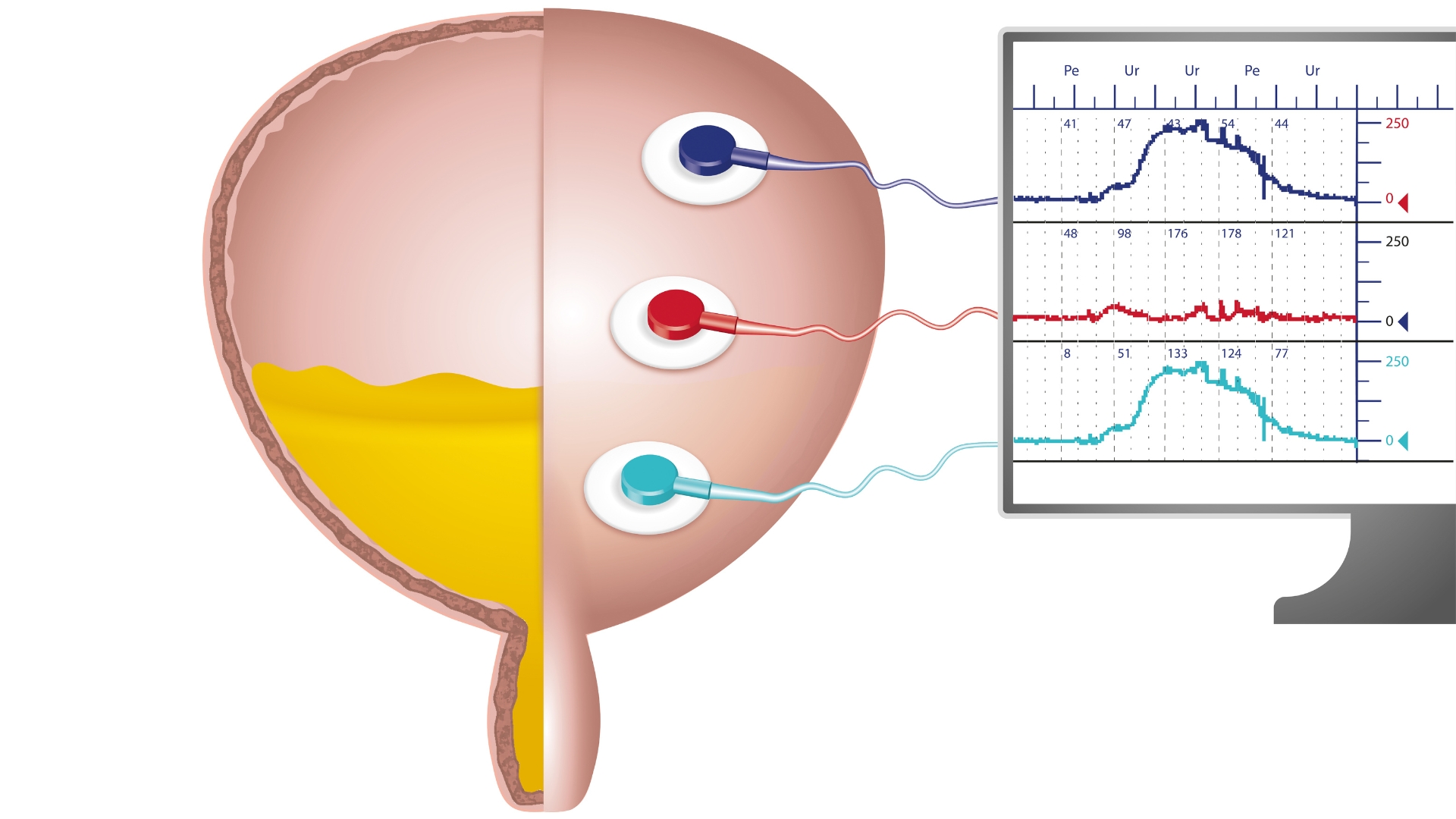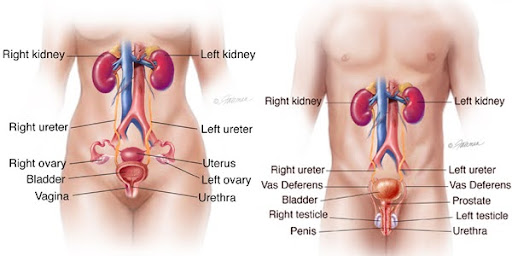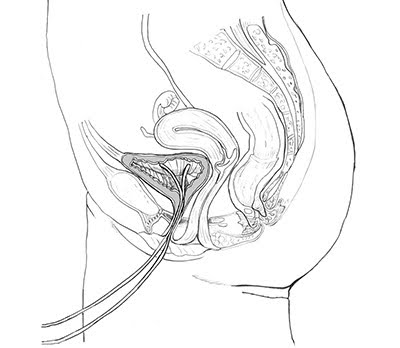
Urodynamic Testing
Urodynamic Testing or “Urodynamic Studies” (UDS) test how well the bladder, sphincters, and urethra hold and release urine. These tests can show how well the bladder works and why there could be leaks or blockages.
There are many types of urodynamic tests. We may recommend one or more based on your symptoms, but they are typically performed together as one test.
These tests, which are explained here, are all UDS tests:
- Cystometry, or Getting a Cystometrogram
- Electromyography, or getting an Electromyogram (EMG)
- Urethral Pressure Profile
- Uroflowmetry
- Voiding Pressure Study (Pressure Flow Study)
Why Would I Need Urodynamics?
Urodynamic Testing helps find the cause of problems related to:
- Urine leaks/controlling your urine
- Bladder not emptying all the way
- The need to go too often
- The need to go suddenly
- Weak urine flow
- Urine flow stopping and starting (“intermittent”)
- Getting urinary tract infections often
We will talk with you about your symptoms. Then we’ll perform a physical exam and start with simple urine tests.
If more information is needed, we may suggest UDS and possibly x-rays. Dr. Todd will create a treatment plan based on what we learn from the studies. Additional tests will help to clarify the problem.
To prevent infection, you will often be given an antibiotic before and/or after your test. You will also be asked to arrive with a full bladder.
How Does the Lower Urinary Tract Usually Work?
Your lower urinary tract includes the bladder and the urethra and the prostate (if you are born male).
The bladder is a balloon-shaped organ that stores urine, which is made in the kidneys. It’s held in place by pelvic muscles in the lower part of your belly.
The bladder is relaxed when it isn’t full. Nerve signals in your brain let you know that your bladder is getting full. When it is full, you feel the need to release urine. When you are at the toilet the brain then tells the bladder muscles to squeeze (or “contract”). This forces the urine out of your body through your urethra.
Your urethra has muscles called sphincters. They help keep the urethra closed so you don’t leak before its time to pass urine. These sphincters open up to release urine when the bladder contracts.

Diagram of the Male and Female Urinary Tracts
Cystometry
Cystometry, or cystometrogram, with a pressure flow study is part of urodynamic testing (or UDS). These tests measure how well the bladder functions and can help diagnose problems related to urine control. These can be incontinence, difficulty emptying the bladder, overactive bladder, obstructions or frequent infections.
Cystometry is used to measure how much urine the bladder can hold. It also measures pressure inside the bladder, and how full it is when you have the urge to go.

Diagram of Cystometry
Electromyography
Electromyography (EMG) tests the electrical activity of the muscles and nerves of the pelvic floor. If a urinary problem may be related to nerve or muscle damage or abnormal movement of the pelvic floor muscles, EMG is used. Small sticky sensors are placed near the urethra or rectum to record muscle and nerve activity. This test measures the strength and activity of muscles and nerves in and around the bladder and sphincters.
Urethral Pressure Profile
To learn about the strength of your urethra and its outlet, more testing may be done. The catheter with a sensor might be moved back and forth in the urethra. This will record information about the urethra and outlet. This test is called a “urethral pressure profile” (or UPP).
Uroflowmetry
Uroflowmetry measures how much urine comes out, and how fast. It is done in two-parts. Your doctor may suggest this test if you have trouble urinating, or have a slow stream.
By measuring the average and top rates of urine flow, this test can show a blockage such as an enlarged prostate. You will be asked to arrive with a full bladder for best test results.
Voiding Pressure Study
A pressure flow study measures the pressure in your bladder as you urinate. It also measures the urine flow rate. This study helps to find a block in the bladder from prostate enlargement or when combined with the CMG may identify a weak bladder or another issue.
When you feel your bladder is full, you’ll be asked to urinate into a special chair. This time, you’ll urinate with a void pressure catheter (a “manometer”) in place. The catheter is small and your urine will flow around the catheter. This tool measures how well your bladder muscles work as it empties.
After the studies, some people feel a burning sensation or pain or may see blood in the urine. This goes away within a day or two. If you continue to see blood in your urine or have a fever, please let the doctor know.
After the Procedure
These tests may leave you with slight discomfort for a few hours when urinating. It helps to drink several glasses of fresh water after the tests. You may find comfort with a warm, damp washcloth placed over the urethral opening.
We will discuss test results with you. After you learn more, we’ll decide on the best treatment plan.

